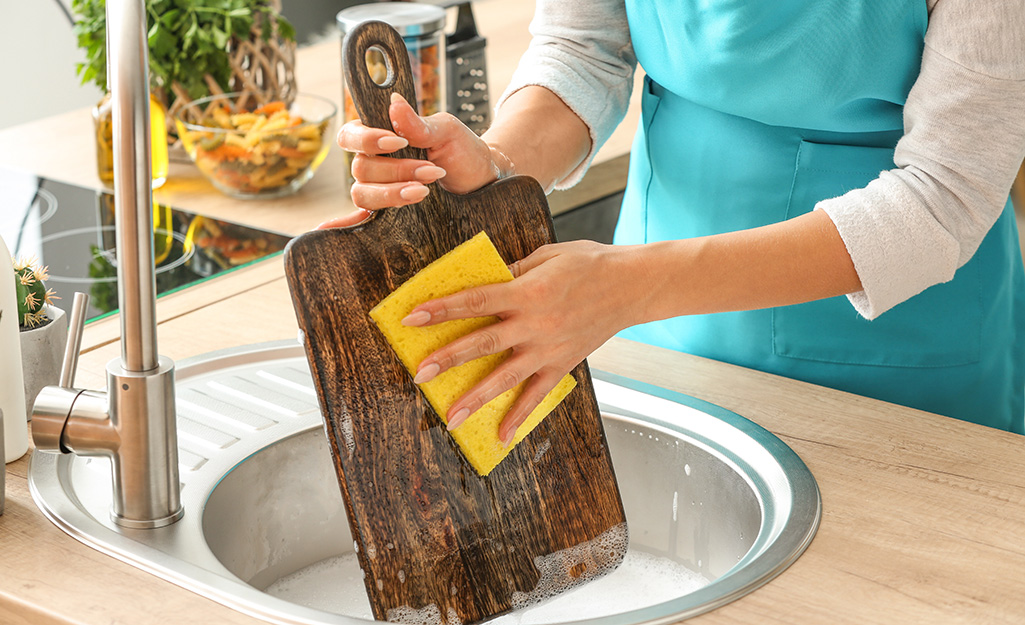
Cutting boards are essential kitchen tools used daily for preparing a variety of foods. Given their frequent contact with raw meats, vegetables, fruits, and other ingredients, they can quickly become breeding grounds for bacteria if not properly maintained. Keeping your cutting board clean is crucial for both food safety and the longevity of the board. This comprehensive guide covers everything you need to know about cleaning different types of cutting boards, from basic daily cleaning to deep cleaning and maintenance tips.
Importance of Cleaning Cutting Boards
Food Safety
Cutting boards can harbor harmful bacteria such as Salmonella, E. coli, and Listeria, especially after contact with raw meat, poultry, or seafood. Proper cleaning reduces the risk of cross-contamination and foodborne illnesses.
Longevity of the Cutting Board
Regular cleaning and maintenance can significantly extend the life of your cutting board. Proper care prevents warping, cracking, and the buildup of deep cuts that can trap bacteria.
Aesthetic Appeal
A clean cutting board looks more appealing and can make your kitchen environment more pleasant. It also ensures that flavors and odors from previous foods do not transfer to new ingredients.
Types of Cutting Boards
Different types of cutting boards require different cleaning and maintenance methods. The main types of cutting boards include:
Wooden Cutting Boards
Wooden cutting boards are popular for their durability and natural antimicrobial properties. However, they require specific care to prevent cracking and warping.
Plastic Cutting Boards
Plastic cutting boards are easy to clean and can be used for a variety of foods. They are dishwasher-safe but can develop deep cuts over time, which can harbor bacteria.
Bamboo Cutting Boards
Bamboo cutting boards are eco-friendly and harder than most woods, making them less prone to knife marks. They require similar care to wooden boards but are slightly more resistant to moisture.
Glass and Marble Cutting Boards
Glass and marble cutting boards are easy to clean and do not harbor bacteria. However, they can be harsh on knives and are less commonly used for everyday food preparation.
Daily Cleaning Methods
Wooden Cutting Boards
- Scrape Off Debris: Use a bench scraper or a knife to remove any food particles or debris from the surface.
- Wash with Warm Soapy Water: Use a sponge or dishcloth with warm, soapy water to scrub the surface. Avoid soaking the board in water to prevent warping.
- Rinse and Dry: Rinse the board thoroughly with warm water and dry it immediately with a clean towel. Stand the board upright or prop it on its side to ensure complete air drying.
Plastic Cutting Boards
- Remove Debris: Scrape off any leftover food particles.
- Wash in the Dishwasher: Plastic cutting boards can be placed in the dishwasher for thorough cleaning. Ensure that the board is secured and will not shift during the wash cycle.
- Hand Wash if Necessary: If washing by hand, use warm, soapy water and a sponge or dishcloth. Rinse thoroughly and dry completely.
Bamboo Cutting Boards
- Remove Food Particles: Scrape off any food residue.
- Wash with Warm Soapy Water: Use a sponge or dishcloth to scrub the surface with warm, soapy water. Avoid soaking the board.
- Rinse and Dry: Rinse with warm water and dry immediately. Stand the board upright or prop it on its side for air drying.
Glass and Marble Cutting Boards
- Remove Debris: Scrape off any food particles.
- Wash with Soapy Water: Use a sponge or dishcloth with warm, soapy water to clean the surface.
- Rinse and Dry: Rinse thoroughly with warm water and dry with a clean towel.
Deep Cleaning Methods
Wooden Cutting Boards
- Salt and Lemon Scrub: Sprinkle coarse salt over the surface of the board. Cut a lemon in half and use it to scrub the salt into the board. The acid in the lemon helps disinfect, while the salt acts as an abrasive.
- Baking Soda Paste: Mix baking soda with water to create a paste. Apply the paste to the board and scrub with a sponge or brush. Rinse thoroughly and dry.
- Vinegar Solution: Mix equal parts white vinegar and water. Use a cloth or sponge to wipe down the board with the solution. Rinse and dry thoroughly.
Plastic Cutting Boards
- Bleach Solution: For a thorough disinfection, mix a solution of one tablespoon of bleach per gallon of water. Soak the board in the solution for a few minutes, then rinse thoroughly with hot water and dry.
- Hydrogen Peroxide: Pour hydrogen peroxide over the board and let it sit for a few minutes. Rinse thoroughly with hot water and dry.
- Baking Soda and Vinegar: Sprinkle baking soda over the surface, then spray with white vinegar. Let it bubble for a few minutes, then scrub with a brush, rinse, and dry.
Bamboo Cutting Boards
- Salt and Lemon Scrub: Similar to wooden boards, sprinkle salt and scrub with a lemon half. Rinse and dry thoroughly.
- Vinegar Solution: Wipe down with a mixture of equal parts white vinegar and water. Rinse and dry.
- Baking Soda Paste: Apply a baking soda paste and scrub. Rinse thoroughly and dry.
Glass and Marble Cutting Boards
- Dishwashing Detergent: Use a mixture of dishwashing detergent and warm water to scrub the surface. Rinse thoroughly and dry.
- Vinegar Solution: Wipe down with a mixture of equal parts white vinegar and water. Rinse and dry.
- Hydrogen Peroxide: Pour hydrogen peroxide over the surface, let it sit, rinse, and dry.
Maintenance Tips for Cutting Boards
Wooden and Bamboo Cutting Boards
- Oil Regularly: Apply food-grade mineral oil or a specialized cutting board oil to the surface every few weeks. This prevents the wood from drying out and cracking. Apply a generous amount of oil, let it soak in for several hours or overnight, and wipe off any excess.
- Avoid Soaking: Never soak wooden or bamboo cutting boards in water. Prolonged exposure to water can cause the wood to warp and crack.
- Use Separate Boards: To avoid cross-contamination, use separate cutting boards for raw meats and other foods like vegetables and fruits.
Plastic Cutting Boards
- Replace When Needed: Over time, plastic cutting boards can develop deep cuts that harbor bacteria. Replace the board when it becomes excessively worn.
- Sanitize Regularly: Use a bleach solution or hydrogen peroxide to sanitize the board regularly, especially after cutting raw meat.
- Avoid High Heat: While plastic boards are generally dishwasher safe, avoid exposing them to excessively high heat, which can warp the material.
Glass and Marble Cutting Boards
- Avoid Dropping: Glass and marble boards can break or chip if dropped. Handle them with care.
- Use Sparingly: Due to their hardness, which can dull knives, use glass and marble cutting boards sparingly, ideally for tasks like rolling out dough or serving cheese.
- Clean Immediately: Clean these boards immediately after use to prevent stains and odors from setting in.
How to Remove Stains and Odors
Wooden and Bamboo Cutting Boards
- Salt and Baking Soda: For stains, sprinkle baking soda or salt on the surface and scrub with a damp cloth. Rinse and dry.
- Vinegar and Baking Soda: For odors, apply a paste of baking soda and water, let it sit for a few minutes, then rinse with a vinegar solution.
Plastic Cutting Boards
- Bleach Solution: For stubborn stains, soak the board in a solution of one tablespoon of bleach per gallon of water. Rinse thoroughly and dry.
- Lemon Juice: Rub the surface with lemon juice and let it sit for a few minutes. Rinse and dry.
Glass and Marble Cutting Boards
- Baking Soda Paste: Apply a paste of baking soda and water to the stained area, let it sit for a few minutes, then scrub and rinse.
- Vinegar Solution: For odors, wipe the surface with a mixture of equal parts white vinegar and water. Rinse and dry.
How to Sand and Restore Wooden Cutting Boards
Sanding
- Identify Deep Cuts and Stains: Over time, wooden cutting boards can develop deep cuts and stains that regular cleaning cannot remove. Sanding can help restore the surface.
- Choose Sandpaper Grit: Start with coarse-grit sandpaper (around 80-grit) to remove deep cuts and stains. Progress to finer grits (120-grit, then 220-grit) for a smooth finish.
- Sand Evenly: Sand the entire surface evenly, following the grain of the wood. Use a sanding block or an orbital sander for consistent pressure.
- Wipe Clean: After sanding, wipe the board clean with a damp cloth to remove any dust.
Oiling
- Apply Oil Generously: After sanding, apply a generous amount of food-grade mineral oil or cutting board oil to the surface. Let it soak in for several hours or overnight.
- Wipe Off Excess: Wipe off any excess oil with a clean cloth. Your cutting board should now be restored and ready for use.
Conclusion
Proper cleaning and maintenance of cutting boards are crucial for food safety, the longevity of the board, and maintaining a clean kitchen environment. By following the methods outlined in this guide, you can ensure that your cutting board remains hygienic, free from stains and odors, and in optimal condition for preparing food. Regular cleaning, deep cleaning when necessary, and proper storage will help you enjoy safe and efficient food preparation with your cutting boards for years to come.







